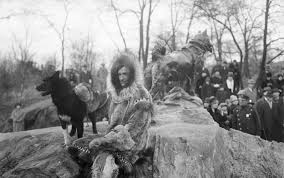In January 1925, the remote town of Nome, Alaska, faced a deadly diphtheria epidemic. With lives in peril, a brave group of mushers and sled dogs set out on a dangerous journey to deliver life-saving serum. Among them, a husky named Balto emerged as a hero.
The Diphtheria Epidemic in Nome
Diphtheria was a major cause of death in early 20th century America, especially for children. In 1921, it killed over 15,000 Americans. When the epidemic hit Nome, a town of 1,400 people, seven had already died, 19 were sick, and 150 were at risk. The town needed a serum, but the nearest supply was 700 miles away in Nenana. With winter making travel almost impossible, the situation was dire. A race against time to save Nome was about to begin.
The Great Race of Mercy
Known as the Great Race of Mercy or the Nome Serum Run of 1925, the plan was to transport the serum to Nome via dog sled relay. Twenty mushers and their sled dog teams would face gale-force winds, whiteout conditions, and cracking ice over treacherous terrain. Normally a month-long journey, they aimed to complete it in just over five days. Among these brave teams, Balto would become a symbol of courage and determination.
Balto’s Journey
Born in Nome around 1919, Balto was a Siberian Husky bred by musher Leonhard Seppala. Initially, Balto was just another dog in the pack. However, when the “Alaskan Black Death” struck, his extraordinary skills and resilience stood out. The serum run took place in the harsh winter, with frozen pack ice and temperatures as low as -50 degrees Fahrenheit. Despite the conditions, the mushers persevered, passing the serum from one team to another. Finally, Balto led the last leg of the race.
The Heroic Journey of Balto
Balto, along with musher Gunnar Kaasen, took on the final 54-mile stretch. Facing blizzards and near-zero visibility, they pushed forward. On February 2, 1925, after over five days of relentless effort, Balto and his team arrived in Nome with the life-saving serum. They handed the serum to Dr. Curtis Welch, ending their heroic journey. Balto became an instant hero in Nome and beyond.
The Legacy of Balto
Balto’s fame spread across America. In New York City’s Central Park, a statue commemorates his remarkable achievement. Sculpted by Frederick George Richard Roth, it honors the sled dogs’ spirit throughout the 600-mile trek. Some believed another dog, Togo, had endured a more challenging journey, and musher Leonhard Seppala felt Togo’s contributions were overshadowed by Balto’s fame. Despite this, Balto’s legacy remains the most celebrated of all the dogs involved in the serum run. Balto passed away in 1933 at the age of 14, but his memory lives on. His body is preserved at the Cleveland Museum of Natural History, where admirers can honor the resilient underdog.
